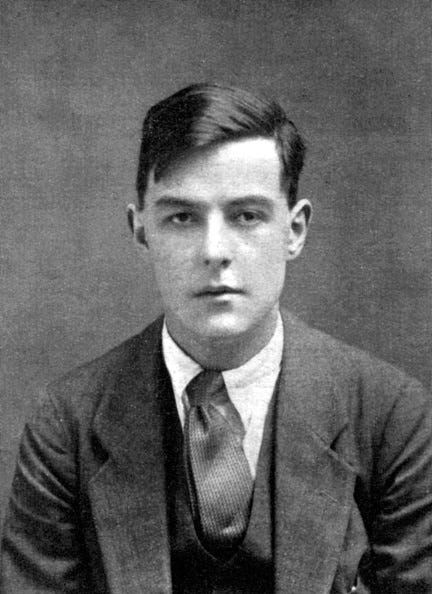The Writer's Almanac from Tuesday, October 29, 2013
"For Fathers of Girls" by Stephen Dunn, from New and Selected Poems. © Norton, 1994
ORIGINAL TEXT AND AUDIO - 2013
It's the birthday of the biographer James Boswell, born in 1740 in Edinburgh, Scotland. His family was descended from minor royalty, and they had occupied the same land more than two hundred years. Boswell's father was a judge who insisted that his son study law. So James Boswell passed his bar exams in Scotland, but he didn't really like law and he didn't really like Scotland. Boswell loved gossip, drinking, and traveling, and he wanted to be in London, to be in the company of the rich and famous. He also wanted to be known as a great lover, so he bragged constantly about his love life.
James Boswell was a good writer with an incredible memory, and he started keeping a journal as a teenager, and he kept it for the rest of his life, filled with reflections and anecdotes about the famous people he befriended—Voltaire, Rousseau, Oliver Goldsmith, John Wilkes. Most of all he wrote about his friend Samuel Johnson. When Boswell was just 22 years old, he met Johnson, who was his idol, in the back of a bookshop. Johnson was 53, and he gave the young Boswell a hard time when he met him, but Boswell went back to visit him anyway and they soon became good friends. Over the next 20 years, Boswell followed Johnson around, and he always had paper and took notes constantly. Johnson was often frustrated with Boswell, and Boswell could be critical of Johnson, but they still liked to spend time together, and they traveled together through Scotland and the Hebrides.
After Johnson's death, Boswell spent years writing a biography of his friend. He used letters, interviews, as well as his own diary, of which he said, "A page of my Journal is like a cake of portable soup. A little may be diffused into a considerable portion." Finally, in 1791, The Life of Samuel Johnson was published, and people loved it. There had never been a biography like it before. Instead of a dry recitation of facts, Boswell filled his book with personal anecdotes and vivid descriptions, and overall it was fun to read, and he made Johnson sound like a real person who wasn't totally perfect. It's still considered one of the greatest biographies ever written, and it's a big part of the reason why Samuel Johnson is still so famous today.
It's the birthday of the children's poet and novelist Valerie Worth, born in Philadelphia, Pennsylvania in 1933. She's most famous for her "small poems," poems for children about everyday objects, and she said "As a child, I preferred reading and writing to everything else, and I still feel much the same way. I was also greatly attracted to 'smallness,' perhaps because throughout grade school I myself was the smallest in my class. My favorite fairy tale was 'Catskin,' about the princess given three ball gowns—one like the sun, one like the moon, and one like the stars--packed up in a walnut shell; and the idea of such magnificence hidden inside so plain and tiny a thing not only fascinates me still, but also has served as a model for many of my poems." Her books include Small Poems (1972), Small Poems Again (1986), and Curlicues: The Fortunes of Two Pug Dogs (1980).
Here is the poem "Safety Pin":
Closed, it sleeps
On its side
Quietly,
The silver
Image
Of some
Small fish;
Opened, it snaps
Its tail out
Like a thin
Shrimp, and looks
At the sharp
Point with a
Surprised eye.
From More Small Poems. Published by Farrar, Straus and Giroux. Copyright 1976.
It's the birthday of the British novelist Henry Green, born Henry Yorke in Tewkesbury, England (1905). He wrote most of his first novel while he was a teenager, going to school at Eton, a novel called Blindness (1926). Then he went to Oxford, but he mostly drank, played billiards, and went to movies. So he dropped out and went to work as a laborer in an iron foundry, a factory which made beer-bottling machines and plumbing equipment, and he used that experience to write his second novel, Living (1929). He wrote many more novels, and he's best remembered for Loving (1945), which TIME magazine named one of the 100 Best English-language Novels from 1923 to 2005. Loving is what's called an upstairs-downstairs story; it's about a fancy country home in Ireland, parallel stories of the people who live there and the servants who work there.
Green wrote, "Prose should be a long intimacy between strangers with no direct appeal to what both may have known. It should slowly appeal to feelings unexpressed, it should in the end draw tears out of the stone."
Today is the birthday of the folk artist and quilt maker Harriet Powers, born into slavery outside Athens, Georgia (1837). She was married at 18 and gave birth to nine children. She lived most of her life in Clarke County, where in 1897, she begin exhibiting her quilts at local cotton fairs. She was believed to have been a house slave and first learned to read with the help of the white children she cared for.
Powers quilts used a combination of hand and machine stitching along with appliqué to form small detailed panels. She then organized these squares to unfold a larger story, much like a modern graphic novel. This teaching style of quilting has its roots in West African coastal communities, and her uneven edging of panels mirrored the complex rhythms of African-American folk music. Through her quilts, she recorded legends and biblical tales of patience and divine justice. Only two pieces of her work have survived: Her Bible quilt of 1886, which she sold for $5 in the aftermath of the war, now hangs in the Smithsonian in Washington, D.C. Her Pictorial quilt of 1888 is displayed in the Museum of Fine Arts in Boston. Powers' work is now considered among the finest examples of Southern quilting from the 19th century.
The city of Athens held a centennial celebration in her honor in 2010, and the mayor officially declared October 30th as Harriet Powers Day.
Be well, do good work, and keep in touch.®
We hope you can join us for for our Christmas show! Click on the image below for a details and ticket information.






I saw the Bible Quilt in the Smithsonian. What a remarkable piece of art it is. I appreciate it even more because my grandmother, who was a talented quilter, tried to teach me that skill. I got a solid F.
It's easy to be intimidated when you first see a copy of Boswell's "Life of Johnson". Mine has 1400 pages, on a par with Victor Hugo's "Les Miserables", and I am not finished with it...
It is a massive biography, abounding with details. I mean, who would not be fascinated to read that a young woman, Elizabeth Blaney, died of unrequited love for his father, Michael Johnson? He offered to marry her when he found out, but it was too late, "her vital power was exhausted; and she actually exhibited one of the very rare instances of dying for love"
This is a book to take with you on transcontinental flights, where the alternative is to stare for ten hours at a small screen in front of you.